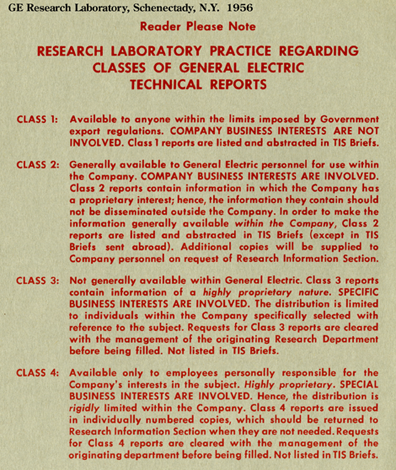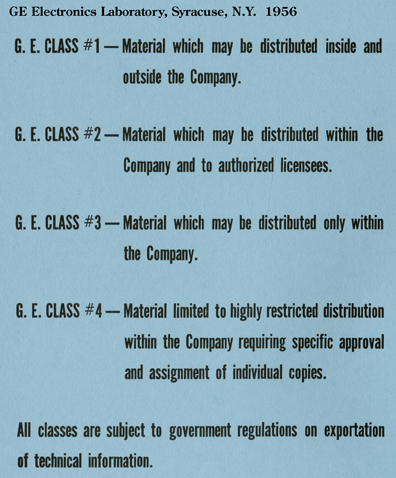

General Electric had a company-wide system of document confidentiality, with Class 1 the most lenient and Class 4 the strictest. There are slightly varying definitions of these four classes, as shown by these scans of the inside covers of several documents:



Some internal memos are stamped "CONFIDENTIAL". Most CRT Department memos were not marked regarding confidentiality.
Documents in the Von Campbell collection range from Class 1 to Class 4. So, the question is: what are the legal implications of making such documentation public? These documents range from 39 to 76 years old and the technologies they describe are quite obsolete. The information here, though, is an important resource for researchers of the history of technology. As noted in the link about provenance, this documentation has passed through several hands quite legally, except for one case: when Von Campbell took the documents home and didn't return them to GE upon retirement. Since he died in 2012, there is no recourse here.
Virtually none of the documents in the Von Campbell collection were copyrighted, rather they fell under trade secret rules. Any copyrighted documents that were published before 1964 and did not have their copyrights renewed are now in the public domain. My own research at the Library of Congress in Washington has shown very little copyright renewals for technical documentation, when it was copyrighted at all.
If an authorized representative of General Electric or a company divested by General Electric can show that the release of this information will harm their ongoing or future business interests, I will take down the offending documents. Otherwise they will remain available to the public.
- John Atwood